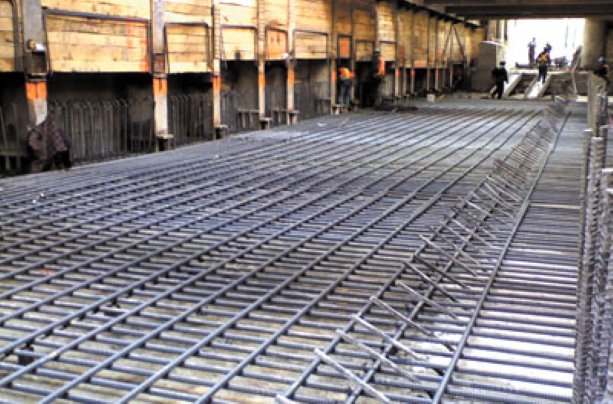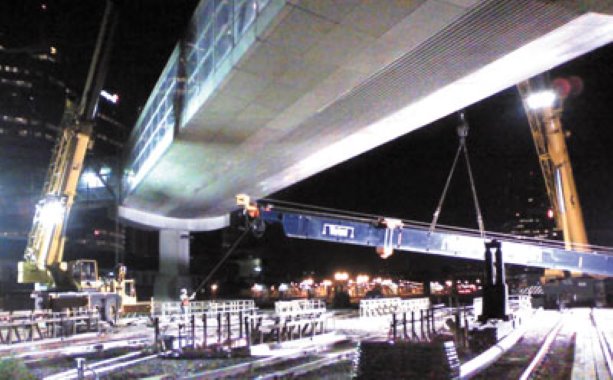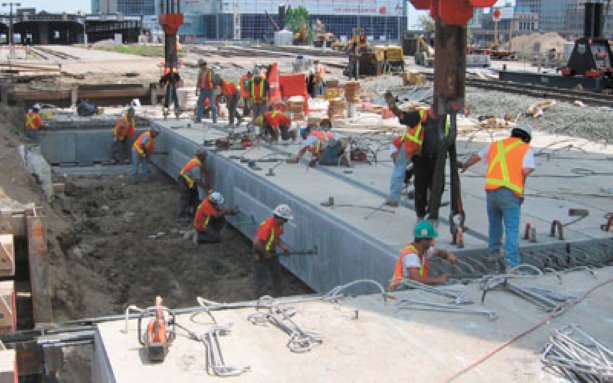Under ground and under the radar of passersby, a $40 million Simcoe Street tunnel extension has required military precision to build in one of North America’s busiest railway corridors.
Unique Challenge
$40 million tunnel expansion kept trains on track
TORONTO
Under ground and under the radar of passersby, a $40 million Simcoe Street tunnel extension has required military precision to build in one of North America’s busiest railway corridors.
“We could not close down any of the tracks overhead,” says Clyde Crocker, Soncin’s Simcoe Street Tunnel project manager. “The railway could have shut us down anytime if we slowed things down or created a problem.”
Soncin was contracted in May 2006 by Fairmont Developments to construct the extension of Simcoe Street, a four-lane underpass which has 13 active rail lines overhead. Construction had to occur without affecting GO Transit, VIA and CNR rail traffic through the Union Station corridor.
Even though the project unfolded in the heart of Toronto’s railway traffic and was surrounded each day by commuter traffic and nearby condominium construction, no one has really noticed the undertaking on Soncin’s plate, says Crocker.
Some construction sites across the Greater Toronto Area can proceed in isolation without much contact with the public. For Soncin, the public played a major role in its project planning.
“It was quite the undertaking,” says Crocker. “It was a complete team effort to make it all happen.”
The Union Station corridor has the highest train volume for a single terminus location in North America. Excavating 20,000 cubic metres of material and integrating the construction project’s schedule, without interrupting commuter and commercial rail traffic, posed unique logistical challenges.
Regular progress meetings with railway and city officials were held every two weeks.
“We needed to keep everyone in the loop and let them know what came next,” adds Crocker.
A key component in building the tunnel was the readily available supply of precast deck segments nearby. The project required 1.6 kilometres of girders so Soncin constructed a precast facility on site. A total of 153 girders were produced in three months. Fifty-one girders were post tensioned and 102 girders were normally reinforced.
The most challenging aspect of the project, besides working in a tight piece of real estate, dominated by rail traffic, was the schedule for construction itself, says Crocker.
Excavation and construction of the bridge’s abutment and piers occurred during regular weekday working hours. The new bridge’s deck provided the biggest and most meticulous planning challenge as it had to be built in sections and completed on pre-determined weekends between 7 p.m. Fridays and 5 a.m. Mondays.
The methodical phasing of this 20 to 30 feet worth of weekend work required everyone on site to be on the same page, says Crocker. With such a small window for construction on pre-determined weekends, precise installation was required. Soncin created an installation manual and supplied one to everyone who worked on the project.
“The manual detailed everything, right down to the smallest detail,” explains Dennes Soncin, Soncin vice-president.
“We wanted everything clear in everyone’s mind, from the foreman right down to the subs. Everyone understood what their function was.”
The project was divided into seven phases, each consisting of the removal of an existing temporary structural steel trestle, which carried four rail tracks, and replacing it with a fully functional precast concrete bridge. Each phase included the installation of an average of 22 girders.
“This project is our biggest one to date,” says Soncin. “It has been great to see the coordinated effort and there definitely is some pride in working on a project like this.”
Completion date for the project is slated for July 2008.

1/2












Recent Comments
comments for this post are closed